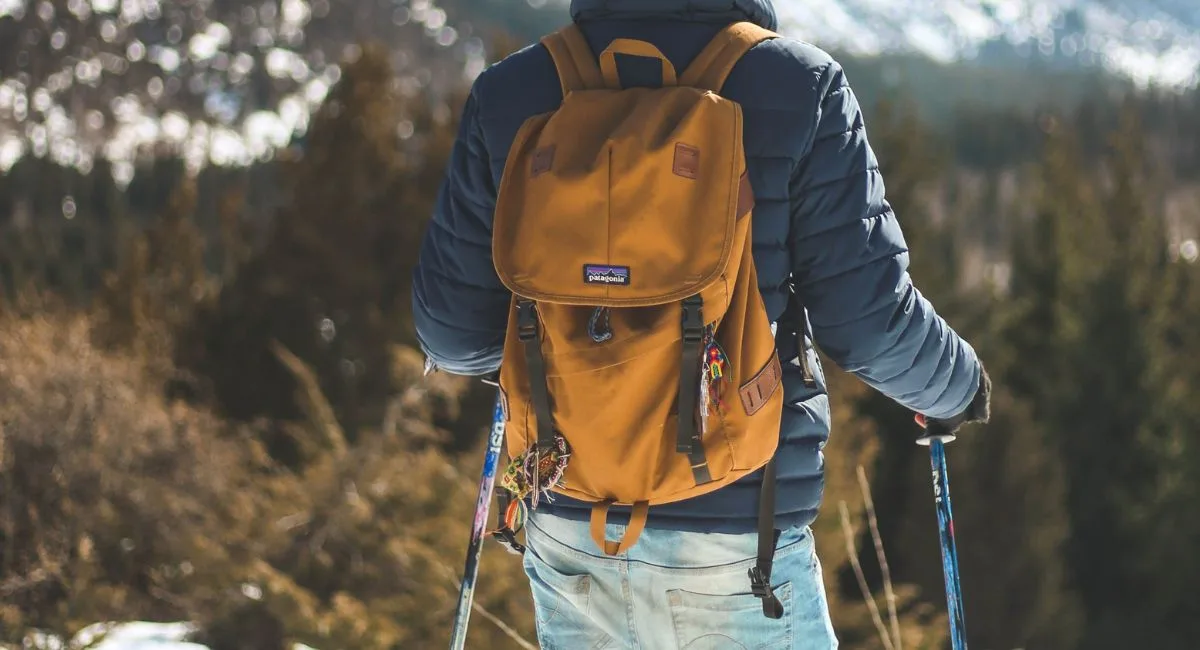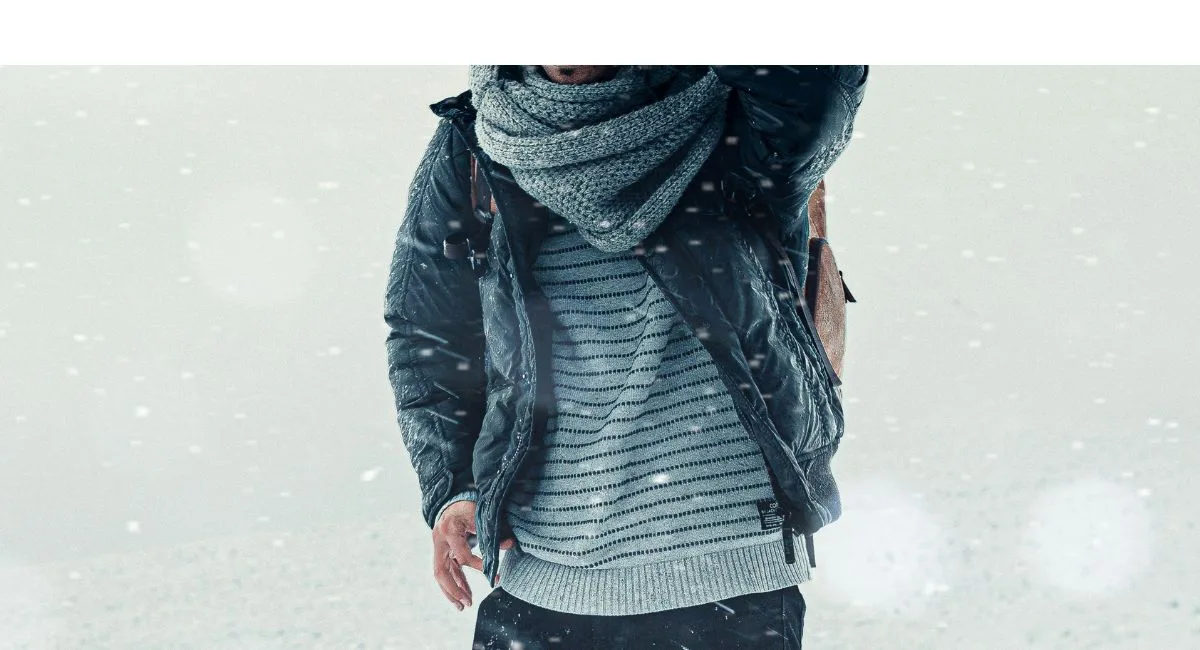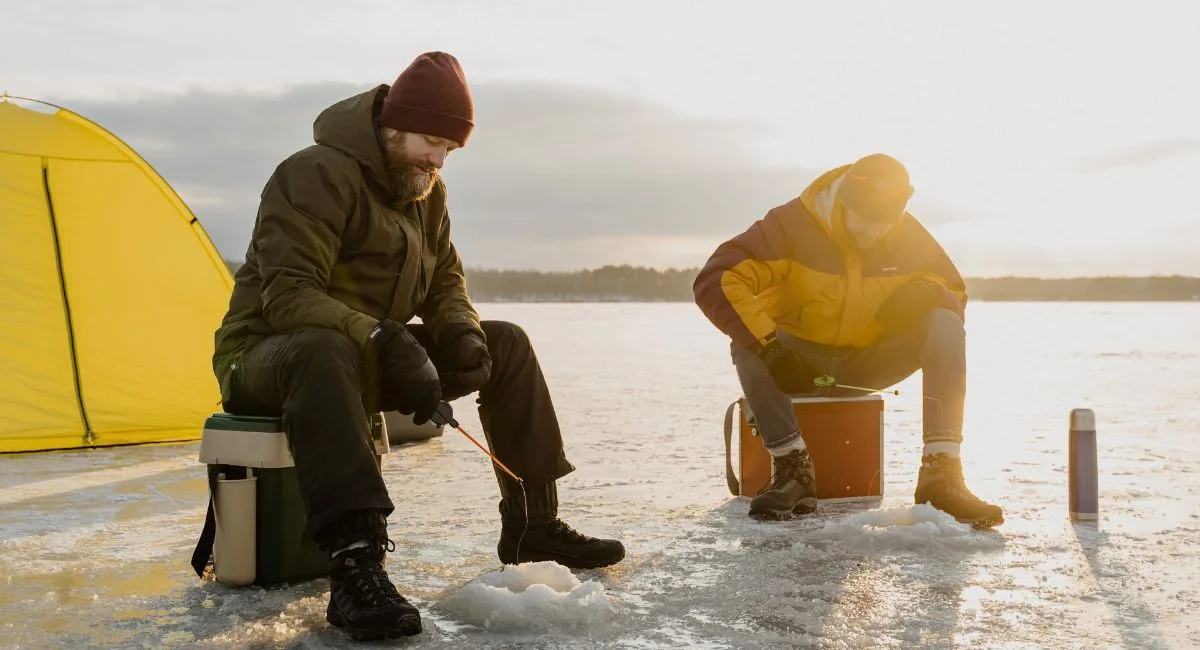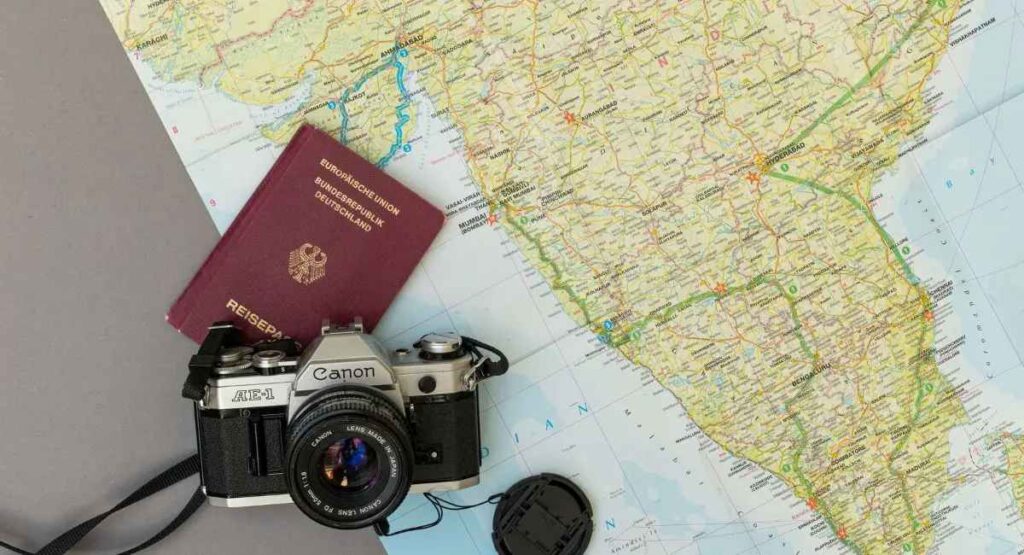I will share with you indispensable insights into crafting an unforgettable winter hiking experience through strategic selection and understanding of the finest winter hiking gear. Be it the piercing cold winds, treacherous icy trails, or the mesmerizing snowy landscapes, we have curated a comprehensive guide to equip you for the ultimate winter adventure. Winter hiking, with its pristine snow-covered landscapes and crisp air, offers a unique and exhilarating outdoor experience. However, the season’s challenges require a meticulous approach and the right equipment to ensure a safe and enjoyable adventure.
Read more: https://traveltipsguide.cloud/index.php/2024/06/12/aegis-travel-insurance-travel-insurance-guide/

Winter hiking presents distinct challenges, such as freezing temperatures, icy trails, and unpredictable weather conditions. The potential for frostbite, slippery terrains, and reduced visibility due to snowfall adds complexity to the adventure. Therefore, adequate preparation is crucial to mitigate these challenges and fully savour the beauty of winter wilderness.
Read more: Winter Hiking Outfits: Comprehensive Guide to Gear and Safety Introduction
Importance of Proper Gear for a Safe and Enjoyable Experience
The cornerstone of a successful winter hike lies in the choice of appropriate gear. Investing in high-quality equipment not only enhances comfort but is also paramount for safety. From insulated jackets to specialized navigation tools, each gear plays an important role in ensuring a memorable and secure winter hiking experience.
1. Essential Clothing: Bundling Up for the Cold:
Insulated Jackets: Types, Features, and Recommendations
Selecting the right insulated jacket is essential for staying warm in chilly conditions. Consider options like down or synthetic fill, each with its unique features. Brands like Arc’teryx, The North Face, and Patagonia offer reliable choices, providing insulation without compromising on mobility.
Layering System: Base Layers, Mid-Layers, and Outer Layers
Mastering the art of layering is key to temperature regulation. In order to stay warm and dry in wet and cold weather, it’s recommended to wear three layers of clothing: a moisture-wicking base layer, a mid-layer for warmth, and a waterproof outer layer. This versatile system adapts to changing weather conditions, ensuring optimal comfort throughout the hike.
Waterproof and Breathable Materials for Outerwear
Investing in waterproof and breathable materials for outerwear is non-negotiable. Brands like Gore-Tex and eVent offer reliable options, preventing moisture from penetrating while allowing sweat to escape. This assures you stay dry and comfortable during the entire journey.
Thermal Socks and the Importance of Keeping Feet Warm
Keeping your feet warm is vital in winter conditions. Opt for thermal socks made from merino wool or synthetic materials. Brands such as Smartwool and Darn Tough provide excellent options to keep your feet cosy and protected.

2. Footwear: Conquering Icy Trails with Confidence:
Insulated and Waterproof Boots: Brands and Features
Choosing the right footwear is paramount for traversing icy trails. Brands like Salomon, Keen, and Columbia offer insulated and waterproof boots designed for winter conditions. Look for features like Thinsulate insulation and a waterproof membrane for optimal performance.
Traction Devices: Discuss the Need for Crampons or Microspikes in Icy Conditions
In icy conditions, additional traction is essential. Consider crampons or microspikes that attach to your boots, providing grip on slippery surfaces. Brands like Kahtoola and Hillsound offer reliable options, ensuring stability on icy trails.
Gaiters for Snow Protection
To prevent snow from entering your boots, use gaiters. These protective coverings wrap around the lower part of your legs and boots, keeping snow out and enhancing overall comfort.
3. Head and Hand Protection: Guarding Against the Chill:
Insulated Hats and Headgear
Combat heat loss through your head by choosing a well-insulated hat or headgear. Brands like Outdoor Research and Mammut offer options that provide warmth without sacrificing breathability.
High-quality gloves or Mittens for Warmth and Dexterity
Invest in high-quality gloves to keep your hands warm and dexterous. Look for options from Black Diamond, Hestra, and Outdoor Research, striking the right balance between insulation and flexibility.
Face Masks or Balaclavas for Wind Protection
Shield your face from biting winds with a face mask or balaclava. These accessories offer added protection against the cold, ensuring your winter hike remains comfortable and enjoyable.
4. Navigation Tools: Ensuring a Safe Journey:
GPS Devices and Smartphone Apps for Winter Hiking
Navigate winter landscapes confidently with the aid of a reliable GPS device or smartphone app. Apps like Gaia GPS and AllTrails provide trail maps, real-time tracking, and other essential features for a smooth hiking experience.
Compass and Map Reading Skills
Enhance your navigation skills by carrying a compass and practising map reading. These traditional tools serve as reliable backups, especially in areas with limited GPS signals.
Emergency Signaling Tools
Prepare for unforeseen circumstances by carrying emergency signalling tools such as a whistle or signal mirror. These simple yet effective devices can attract attention and alert others in case of an emergency.
5. Backpack and Gear Carriage: Efficiently Carrying the Essentials:
Winter-Specific Backpacks and Their Features
Invest in a winter-specific backpack designed to accommodate the unique needs of cold-weather hiking. Brands like Osprey and Arc’teryx offer backpacks with features such as gear loops, ice axe attachments, and reinforced panels for durability.
Gear Organization and Packing Tips for Winter Conditions
Efficient gear organization is crucial for a hassle-free hike. Use waterproof stuff sacks to keep essentials dry. To ensure better weight distribution and balance, it’s recommended to pack heavier items closer to your back.
6. Safety Equipment: Preparedness Is Key:
Avalanche Safety Gear (if Applicable to Your Region)
In regions prone to avalanches, equip yourself with avalanche safety gear. This includes a beacon, probe, and shovel, providing the necessary tools for self-rescue and aiding others in case of an avalanche.
First Aid Kit Essentials for Winter Hiking
Accidents can happen, and readiness is paramount. Pack a complete first aid kit containing bandages, antiseptic wipes, blister treatment, and any necessary medications. A quick response to minor injuries can prevent them from escalating into more significant issues.
Emergency Communication Devices
It is recommended that you carry emergency communication devices, such as a satellite messenger or two-way radio, with you at all times. These devices can be extremely helpful in case of an emergency where you need to communicate with someone for help. These tools enable you to summon help in remote areas where traditional communication methods may be unreliable.
7. Winter Camping Gear (if Relevant): Preparing for Overnight Adventures
Cold-Weather Sleeping Bags and Sleeping Pads
For extended winter adventures, invest in a cold-weather sleeping bag and a suitable sleeping pad. Brands like Western Mountaineering and Therm-a-Rest offer options designed for low temperatures and varying terrains.

Winter Tents and Shelters
Choose a winter-specific tent or shelter to protect against harsh weather conditions. Look for options with sturdy frames, durable fabrics, and adequate ventilation to ensure a comfortable night’s sleep.
Portable Stoves for Cooking in Cold Conditions
Ensure hot meals in cold conditions with a reliable portable stove. Brands like MSR and Jetboil offer compact and efficient stoves suitable for winter camping.
8. Proper Nutrition and Hydration: Nourishing the Winter Hiker:
High-Energy Snacks for Winter Hikes
Pack high-energy snacks like trail mix, energy bars, and dried fruit to fuel your winter hike. These snacks provide a quick and sustained energy boost, keeping you energized in the cold.
Importance of Staying Hydrated in Cold Weather
Despite the cold, staying hydrated is crucial. Carry an insulated water bottle to prevent water from freezing, and sip regularly to maintain optimal hydration levels.
9. Training and Preparation: Conditioning for the Winter Trails:
Physical Conditioning for Winter Hiking
Get ready for winter hiking by improving cardiovascular endurance, strength, and flexibility. A well-conditioned body is better trained to handle the physical demands of cold-weather adventures.
Tips for Acclimating to Cold Weather Conditions
Gradually expose yourself to colder temperatures to acclimate your body. This process helps your body adjust to the cold, reducing the risk of hypothermia and enhancing overall cold tolerance.
Planning and Researching the Chosen Hiking Trail
Thoroughly research and plan your chosen hiking trail. Understand its difficulty level, terrain, and any specific challenges posed by winter conditions. This knowledge enables better preparation and contributes to a safer and more enjoyable hiking experience.
10. Environmental Considerations: Respecting Nature’s Winter Wonderland:
Leave No Trace Principles, Especially in Snowy or Fragile Ecosystems
Adhere to Leave No Trace regulations, ensuring minimal impact on the environment. In snowy or fragile ecosystems, practice extra caution to preserve the pristine beauty of nature.
Wildlife Awareness and Safety
Be mindful of wildlife inhabiting winter landscapes. Maintain a safe distance, avoid disturbing animals, and carry bear spray or other deterrents if venturing into regions with potential wildlife encounters.
11. User Reviews and Recommendations: Real Insights from Fellow Hikers:
Include User Reviews and Recommendations for Specific Gear
Explore user reviews and recommendations for specific gear to gain real insights into performance and durability. Platforms like REI, Amazon, and outdoor forums provide valuable feedback from fellow hikers.
Mention Any Awards or Recognitions Received by Popular Winter Hiking Gear
Highlight gear that has received accolades or recognitions. Awards from outdoor magazines or industry organizations signify the gear’s quality and performance, offering additional reassurance for potential buyers.
Conclusion:
In conclusion, mastering winter hiking requires a combination of preparation, quality gear, and a deep understanding of the environment. Prioritize safety, embrace the challenge, and let the frosty trails become the canvas for your unforgettable winter hiking masterpiece.
FAQs:
What is the key to staying warm during winter hikes?
The key to staying warm during winter hikes lies in effective layering. Utilize a base layer to wick away moisture, a mid-layer for warmth, and a waterproof outer layer to protect against the elements.
How do I choose the right insulated jacket?
When selecting an insulated jacket, consider your activity level, temperature range, and insulation type. Down jackets provide an excellent warmth-to-weight ratio, while synthetic fill performs well in damp conditions.
Which brands offer reliable insulated and waterproof boots?
Brands like Salomon, Keen, and Columbia are renowned for producing insulated and waterproof boots suitable for winter conditions. Look for features like Thinsulate insulation and waterproof membranes for optimal performance.
Are crampons or microspikes necessary for winter hiking?
In icy conditions, traction is crucial. Crampons or micro spikes attach to your boots, providing enhanced grip on slippery surfaces. Brands like Kahtoola and Hillsound offer reliable options for added stability.
How do I choose the right winter backpack?
Opt for a winter-specific backpack with features like gear loops, ice axe attachments, and reinforced panels. Brands such as Osprey and Arc’teryx offer backpacks designed to meet the unique needs of cold-weather hiking.
What emergency signalling tools should I carry?
Essential emergency signalling tools include a whistle or signal mirror. These lightweight devices can attract attention and alert others in case of an emergency.
Do I need avalanche safety gear for winter hiking?
If you are hiking in regions prone to avalanches, it’s crucial to equip yourself with avalanche safety gear. This includes a beacon, probe, and shovel for self-rescue and aiding others in case of an avalanche.
What should be included in a winter camping first aid kit?
A comprehensive winter camping first aid kit should include bandages, antiseptic wipes, blister treatment, and any necessary medications. Be prepared for minor injuries and unexpected challenges.
How can I acclimate to cold weather conditions?
Gradually expose yourself to colder temperatures to acclimate your body. This process helps your body adjust to the cold, reducing the risk of hypothermia and enhancing overall cold tolerance.
Are there specific Leave No Trace principles for winter hiking?
While the core principles remain the same, extra caution is advised in snowy or fragile ecosystems. Minimize your impact, avoid disturbing the environment, and follow ethical practices to preserve the winter wilderness.
Where can I find user reviews for winter hiking gear?
User reviews for winter hiking gear can be found on platforms like REI, Amazon, and outdoor forums. Explore real insights from fellow hikers to make informed decisions about gear purchases.
How important is proper nutrition during winter hikes?
Proper nutrition is crucial during winter hikes. Pack high-energy snacks like trail mix and energy bars to fuel your adventure. Staying hydrated is equally vital, so carry an insulated water bottle to prevent freezing.
Are there specific considerations for winter hiking in fragile ecosystems?
Yes, winter hikers should be especially cautious in snowy or fragile ecosystems. Stick to established trails, avoid trampling on delicate vegetation, and adhere to Leave No Trace principles to protect the environment.
Can I use a regular backpack for winter hiking?
While a regular backpack may suffice for shorter winter hikes, it’s advisable to use a winter-specific backpack for extended or challenging winter adventures. These backpacks come equipped with features tailored to cold-weather conditions.
How do I choose the right winter tent?
When selecting a winter tent, consider factors such as sturdy frames, durable fabrics, and adequate ventilation. Brands like MSR and The North Face offer reliable options designed to withstand harsh winter weather.

